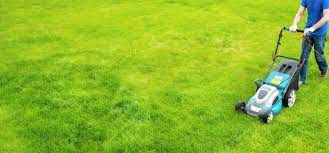A Guide to Palm Tree Diseases and Infestations
Palm trees are a beloved symbol of tropical paradise. Their tall trunks and waving fronds make images of sun-soaked beaches and swaying hammocks in people’s minds. However, like any living thing, palm trees are not immune to disease and infestations. Diseases can cause significant damage to the tree, potentially leading to its death when left untreated. In this blog, we will explore some of the most common diseases and infestations that affect palm trees along with ways to prevent and treat them.
Fusarium Wilt
Fusarium wilt is a fungal disease that affects a variety of palm species, including the Canary Island date palm, the queen palm, and the Mexican fan palm. It is spread through contaminated soil, pruning tools, or even water sources. Symptoms of fusarium wilt include yellowing and wilting of the fronds, starting at the lower branches and moving upward. Eventually, the entire tree may die. There is no cure for fusarium wilt, so prevention is key. Avoid planting susceptible species in contaminated soil, and sterilize pruning tools between uses.
Ganoderma Butt Rot
Ganoderma butt rot is caused by a fungus that attacks the base of the tree, causing it to rot from the inside out. This can lead to the tree becoming unstable and at risk of falling over. Symptoms of Ganoderma butt rot include wilting or yellowing of the fronds, a hollow sound when tapping the trunk, and conks (mushroom-like growths) on the trunk. Unfortunately, there is no cure for it and infected trees should be removed to prevent the spread of the disease.
Palm Weevils
Palm weevils are a type of beetle that feeds on the trunks of palm trees. There are several species of palm weevils, but the most common is the red palm weevil. Symptoms of a palm weevil infestation include wilting or yellowing of the fronds, holes or tunnels in the trunk and the presence of adult beetles or larvae. Infested trees can be treated with insecticides, but prevention is the best approach. Avoid damaging the trunk of the tree, to prevent providing an entry point for the beetles.
Thielaviopsis Trunk Rot
Thielaviopsis trunk rot is a fungal disease that attacks the trunk of the tree, causing it to rot from the inside out. Its symptoms include wilting or yellowing of the fronds, a soft or spongy trunk, and black streaks on the trunk. There is no cure for this disease, so prevention is vital. Avoid planting susceptible species in contaminated soil, and ensure that the tree is not overwatered.
Lethal Yellowing
Lethal yellowing is a bacterial disease that affects the coconut palm and several other species. It is spread by insects such as planthoppers and leafhoppers, and causes yellowing and wilting of the fronds, starting at the top of the tree and moving downward. There is no cure for lethal yellowing as well. infected trees should be removed to prevent the spread of the disease.
In a nutshell
Palm trees are a beautiful and iconic part of tropical landscapes however they are vulnerable to diseases and infestations that can result in significant damage or even death. Prevention is key, and taking steps such as avoiding contaminated soil, sterilizing pruning tools, and using insecticides can help protect your palm trees from these threats. Moreover, opt for palm treecare services in Celebration to keep your palm trees well-managed and disease free.



Comments
Post a Comment